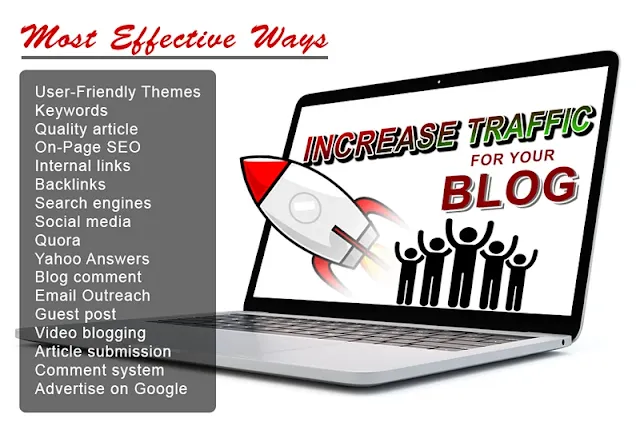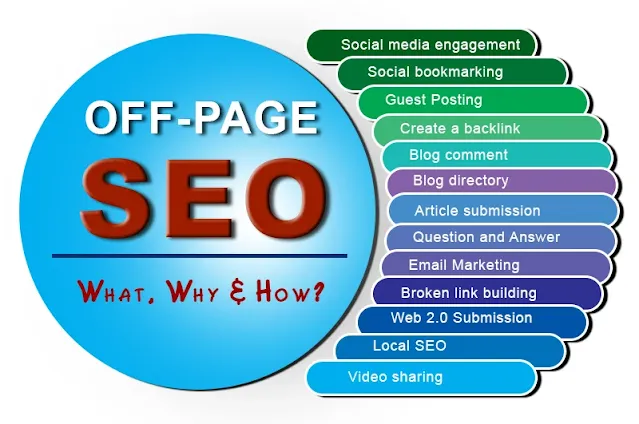How to setup custom robots header tags in blogger
Welcome to another new post from Blog SEO Tips and Tricks. In this post, we will discuss blogger custom robots header tags.
Blogger is increasing the chances of SEO for platform users. Posts on a site rank faster due to improved SEO. And to provide this facility, Google has added the custom robots header tags option to the Blogger platform.
If you want, you can also bring the posts of the blogger site to the 1st page of SERP. That is why the content of the site must be unique and agreeable. Also need to do SEO properly. The way to make SEO more effective is to use custom robots header tags properly.
You May Like
Sitemap contains URLs that are blocked by robots.txt: Way to fix
How to delete blogger blog permanently
Create Effective Blog Titles in Just 9 Simple Steps
Fix 404 Page Not Found on Blogger
How to find and fix index coverage errors
What are custom robots header tags?
Google has introduced custom robot header tags to make Blogspot sites SEO-friendly and suitable for blogging. This is a very important feature for Blogspot blogs. It is used to control the behavior of robots in a blog.
Custom robot header tags are a method by which you can prevent a certain part of your blog from being included in search engines. This may sound like a lot of custom robots.txt, but it's actually more comprehensive. For example, if you select the "Nofollow" tag for your homepage, any links or pages included in the homepage will not be counted by search engines!
Why need to use custom robots header tags
The reason for using custom robot header tags in any blog is that if some pages or links of your blog are included in the search index, there can be problems. Such as the archive page or level section of your blog. If search engines accept these, the posts they contain will appear as duplicate content in search engines and will be penalized by lowering your search rankings. However, there have been complaints of duplicate content or duplicate posts, but, these are all your blog posts. Therefore, custom robot header tags need to be used wisely to avoid such confusion.
Should I Enable custom robots header tags?
If you don't know much about custom robots header tags, you don't need to enable it. Because if you enable this section without realizing it, you are more likely to make a mistake. Which is detrimental to the SEO of your site.
If you do not want to index any link or page of the site, then you need to customize the robot's header tags. And if you enable it, you will get SEO benefits. But before that, you need to know better about it.
Read Also
How to write a comment for quick approval
Best SEO Chrome Extensions for Bloggers
Directive and Meaning of Robots Header tags?
all
Selecting this header tag means that search crawlers are allowed to view and discover every element of your blog. Select this if you want to allow the crawler to crawl and index everything.
noindex
Selecting this will prevent the page from appearing in search results. And if you don't choose, it could be the index. As a result, the page may come up in the search results.
nofollow
This tells the crawler not to follow the links on the page. If you want the links on the page to follow the crawler, do not select them
none
Equivalent to noindex, nofollow.
noarchive
Do not show a "Cached" link in search results. If this instruction is not specified, Google will create a cached page. Which allows access to it from search results. Specify this if you do not want to.
nosnippet
Often a text snippet or video preview is seen in the search results. Which applies to all types of search results. This gives users an idea of the page. If you do not want it, select nosnippet.
noodp
Without this instruction, the meta description will not be displayed in the search results, but information from the web directory will be displayed instead. Selecting noodp directs search engines to display meta descriptions in search results. Displaying meta descriptions in search results improves CTR.
notranslate
This instruction does not allow search engines to display the translated content of the site. If you do not indicate this, a link to view the translated content of the page may appear in the search results.
noimageindex
This instruction does not allow search engines to index the images on the page. If you indicate this, the search engine will not index the images on your site.
unavailable_after: [RFC-850 date/time
There is usually no expiration date for any web content. If you have a post on your site that you do not want to display after a certain date, you need to specify a date/time after selecting this option. But not limited to RFC 822, RFC 850, and ISO 8601. If you do not specify it, it may always appear in the search results.
NOODP Robots Header tag is no longer supported
Since the closure of DMOZ in 2017, Google has stopped supporting the "Noodp" tag. But various websites and YouTube channels suggest bloggers enable this tag. I think this is a bad practice because Google has clearly stated that "With DMOZ (ODP) closed, we stopped relying on its data and thus the NOODP directive is already no-op." You can get more information about "noodp" from here.
Therefore this wrong habit should be abandoned. Otherwise, it can ruin the quality of on-page SEO.
The proper way to set up custom robots header tags on blogger blog
Follow the steps below to choose the right custom robots header tags on the blogger site.
Step 1
Login to www.blogger.com. If you have more than one site, choose the site you want to change the custom robot header tag. If you have only one site then you do not need to select the site.
Step 2
Click "Settings" on the left side of the Blogger Dashboard, scroll down. You will see the "Crawler and Indexing" option at the bottom. Set the custom robots.txt code by enabling “Enable custom robots.txt” under this option. Then activate the button to the right of the “Enable custom robots header tags” option.
Do same as the image bellow
After activating custom robots header tags you will be able to set “Home page tags, Archive and search page tags, and Post and page tags”.
How To Setup Custom Robots Header Tags for Home Page On Blogger
The homepage is very important for any site. And so search engine crawlers need to be allowed to crawl everything by entering here. This allows search engines to easily understand the structure of your site and the behavior of the homepage.
Follow the image below to set up a custom robot header tag for the homepage.
How To Setup Custom Robots Header Tags for archive and search page on Blogger
Archives and searches basically create pages automatically and provide some information about blog posts. These pages enable visitors to easily navigate your blog.
These pages should not be indexed by search engines. Because if these are indexed in search engines then the same post will be shown under different URLs. This will create the problem of duplicate content for the blog. Also, the overall index situation will be erratic. You can set up custom robots header tags for archive and search pages same as the image shown below.
How To Setup Custom Robots Header Tags for Posts and pages
The purpose of creating content is to bring the information we have invented to the audience through our hard work with the help of search engines. But if these posts on your site are not indexed in other search engines including Google, then visitors will not be able to find them. This will make your hard work fail. So you should not refrain from indexing your posts. to set up the custom robots header tags for posts and pages, just select "all" and click save. Below an image, you do just the same as the image.









